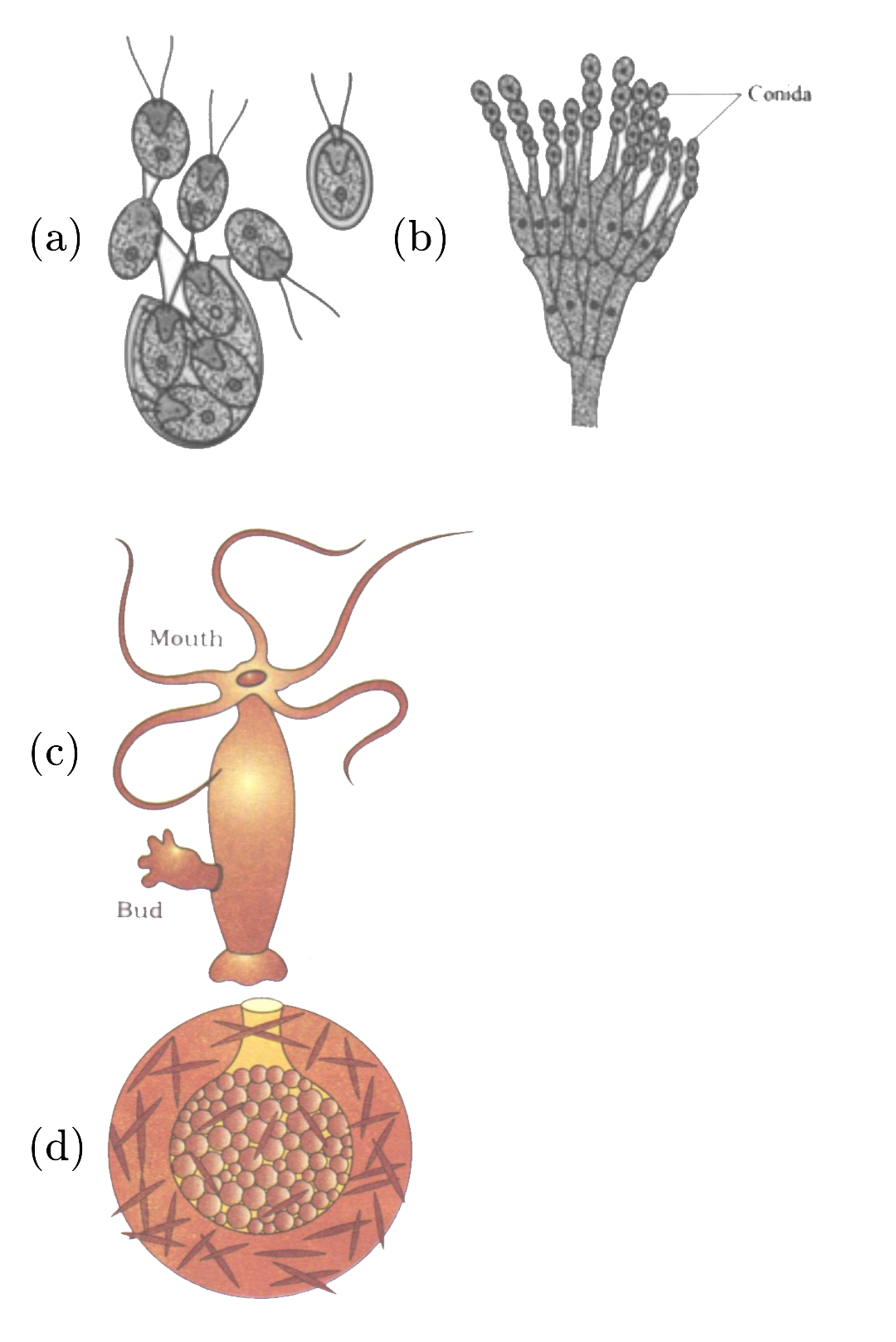Asexual reproduction through budding takes place in :
(i) Amoeba (ii) Yeast and Hydra (iii) Hydra and Plasmodium (iv) Corals and Sponges
(i) and (ii)
only (ii)
(i) and (iii)
(ii) and (iv)
The correct Answer is:D
To determine which organisms reproduce asexually through budding, we can analyze the options provided:
1. Understanding Budding: Budding is a form of asexual reproduction where a new organism develops from an outgrowth or bud on the parent organism. This process is common in certain organisms.
2. Analyzing the Options:
- (i) Amoeba: Amoeba reproduces through binary fission, not budding. So, this option is incorrect.
- (ii) Yeast and Hydra: Both yeast and Hydra reproduce through budding. Yeast is well-known for this method, and Hydra also reproduces asexually by budding. So, this option is correct.
- (iii) Hydra and Plasmodium: While Hydra reproduces through budding, Plasmodium reproduces asexually through a process called schizogony (not budding). So, this option is incorrect.
- (iv) Corals and Sponges: Both corals and sponges can reproduce asexually through budding. So, this option is also correct.
3. Conclusion: The organisms that reproduce asexually through budding are found in options (ii) Yeast and Hydra, and (iv) Corals and Sponges.
4. Final Answer: The correct answer is (ii) Yeast and Hydra and (iv) Corals and Sponges.
- (i) Amoeba: Amoeba reproduces through binary fission, not budding. So, this option is incorrect.
- (ii) Yeast and Hydra: Both yeast and Hydra reproduce through budding. Yeast is well-known for this method, and Hydra also reproduces asexually by budding. So, this option is correct.
- (iii) Hydra and Plasmodium: While Hydra reproduces through budding, Plasmodium reproduces asexually through a process called schizogony (not budding). So, this option is incorrect.
- (iv) Corals and Sponges: Both corals and sponges can reproduce asexually through budding. So, this option is also correct.
Topper's Solved these Questions
- HOW DO ORGANISMS REPRODUCE Book:LAKHMIR SINGH & MANJIT KAURChapter:HOW DO ORGANISMS REPRODUCE Exercise:VERT SHORT ANSWER TYPE QUESTIONS
Explore 4 Videos
- HOW DO ORGANISMS REPRODUCE Book:LAKHMIR SINGH & MANJIT KAURChapter:HOW DO ORGANISMS REPRODUCE Exercise:SHORT ANSWER TYPE QUESTIONS
Explore 34 Videos
- HOW DO ORGANISM REPRODUCEBook:LAKHMIR SINGH & MANJIT KAURChapter:HOW DO ORGANISM REPRODUCEExercise:Exercise
Explore 23 Videos
- LIFE PROCESSESBook:LAKHMIR SINGH & MANJIT KAURChapter:LIFE PROCESSESExercise:question based on high order thinking skills
Explore 1 Video
Similar Questions
Knowledge Check
Asexual reproduction through budding takes place in :
(i) Amoeba (ii) Yeast and Hydra (iii) Hydra and Plasmodium (iv) Corals and SpongesA(i) and (ii)Bonly (ii)C(i) and (iii)D(ii) and (iv)Asexual reproduction takes place through budding in :
ApotatoesBfernsCyeastDSpirogyraAsexual reproduction takes place through budding in
AAmoebaBYeastCPlasmodiumDLeishmania
Budding is a sexual process of reproduction that takes place in hydra.
View SolutionSelect the correct statements regarding the figures given below

(i) (a) shows asexual reproduction through zoospores in Chlamydomonas.
(ii) (b) shows sexual reproduction through conidiophores in Peniciilium.
(iii) (c) shows buds in Hydra.
(iv) (d) shows gemmules in sponge
View SolutionAsexual reproduction takes place through budding in:
View SolutionAsexual reproduction in Hydra occurs through
View SolutionI. Mycelium is branched and septate
II. No asexual spores are generally formed
III. Vegetative reproduction by fragmentation is common
IV. Sex organs are absent but sexual reproduction takes place by somatogamy
V. Karyogamy and meiosis occur in basidium to form haploid exogenous 4 basidiospores
VI. Basidia are arranged in basidiocarp.
The above characters are assigned to-
View Solution